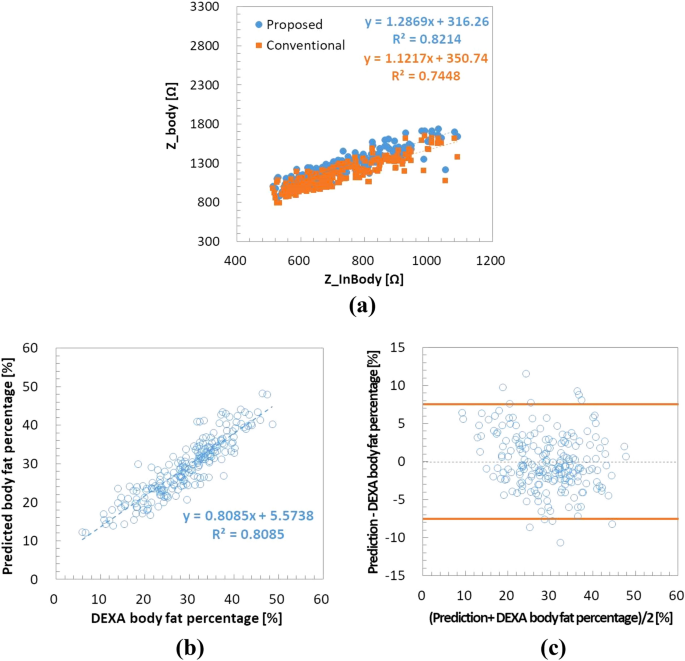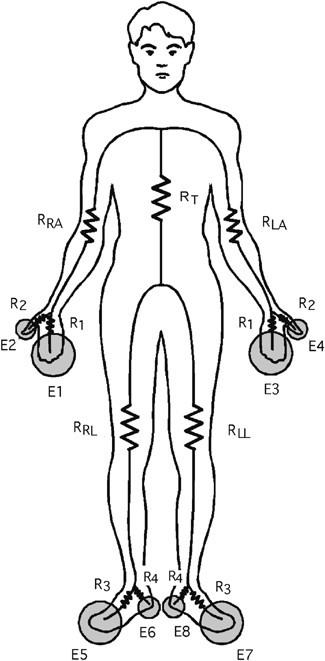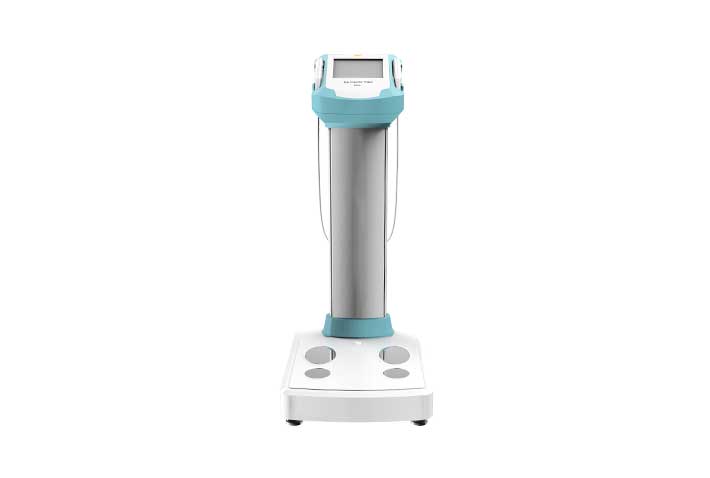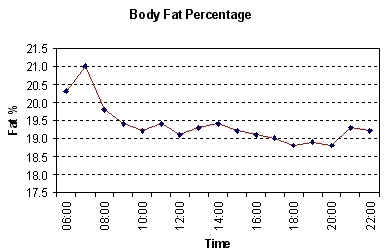Percentage of Body Fat Assessment Using Bioelectrical Impedance
Percentage of Body Fat Assessment Using Bioelectrical Impedance
The current study aimed to compare the estimates of body fat percentage (%BF) by performing bioelectrical impedance analysis (BIA) and dual energy X-ray absorptiometry (DXA) in a sample of obese or overweight Chinese adults who participated in a weight-loss randomized control trial stratified by gender to determine whether or not BIA is a valid measurement tool. Among 189 adults [73 males, 116 females; age = 41 to 74 years; mean body mass index (BMI) = 27.3 kg/m2], assessments of %BF at the baseline and six months from the baseline were conducted by performing BIA and DXA. Bland-Altman analyses and multiple regression analyses were used to assess the relationships between %BFBIA and %BFDXA. Compared with DXA, BIA underestimated %BF [in males: 4.6, –2.4 to 11.7 (mean biases, 95% limit of agreement) at the baseline, 1.4, –7.4 to 10.2 at the endpoint, and 3.2, –4.8 to 11.3 in changes; in females: 5.1, –2.4 to 12.7; 2.2, –6.1 to 10.4; and 3.0, –4.8 to 10.7, respectively]. For males and females, %BFDXA proved to be a significant predictor of the difference between DXA and BIA at the baseline, the endpoint, and in changes when BMI and age were considered (in males: p<0.01 and R2 = 23.1%, 24.1%, 20.7%, respectively; for females: p<0.001 and R2 = 40.4%, 48.8%, 25.4%, respectively). The current study suggests that BIA provides a relatively accurate prediction of %BF in individuals with normal weight, overweight, or obesity after the end of weight-loss program, but less accurate prediction of %BF in obese individuals at baseline or weight change during the weight-loss intervention program.

Body Fat Measurement Market Share

Wrist-wearable bioelectrical impedance analyzer with miniature

a) Basic principle of bioelectric impedance analysis (b) A person

Body Fat Percentage - Bioelectrical Impedance Analysis - BIA

Regional body fat distribution assessment by bioelectrical

Body composition assessment using bioelectrical impedance analysis

PDF) Percentage of Body Fat Assessment Using Bioelectrical

Accuracy of eight-polar bioelectrical impedance analysis for the

Using Body Mass Index and Bioelectric Impedance Analysis to Assess

bodivis Bioimpedance BMR Body Composition Analyzer BCA-2A

Body Fat Percentage Men, How To Measure Bodyfat

Bioelectrical impedance analysis to estimate body composition, and

